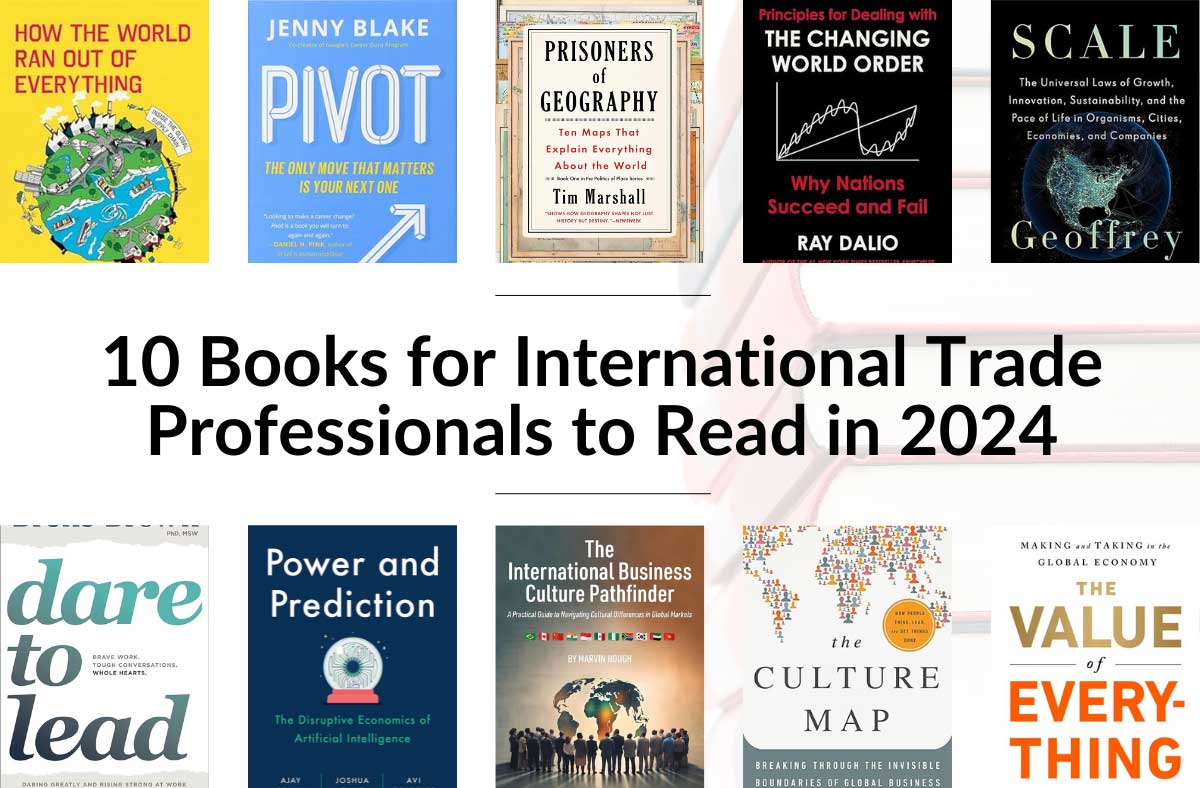
It’s no surprise that the current architecture of the global economic system – including the framework for global trade – is far from perfect. At the same time, it’s clear that there are significant links between trade, trade finance and value creation in the wider economy.
Of course, trade is crucial for developing nations and the companies looking to do business there. And, in turn, trade finance oils the wheels of global trade – helping finance orders as well as mitigate payment and supply risks for buyers and sellers. Yet there are numerous changes underway in the trade finance landscape. New players are entering the industry and technological advancements are automating processes, altering the very nature of the business.
More needs to be done to ensure broader inclusiveness, fairer distribution of wealth and benefits, and sharing of the benefits of trade and international engagement.
Fortunately, shared principles surrounding regulation and compliance will help level the trade landscape and prove useful for those operating in the trade finance industry.
The ever-shifting trade landscape
The global context in which trade takes place has changed dramatically – particularly the way policy is shaped, the way risk is analysed, and the way in which financing is extended. As the International Chamber of Commerce (ICC) Banking Commission’s 2017 Rethinking trade and finance survey highlights, several challenges have emerged in recent years.
Protectionism
Since the 2008 global financial crisis, mounting protectionism across the world has impacted the trade landscape and cross-border flows. While trade generates macro-level benefits as well as benefits for companies pursuing opportunities in global supply chains, voices advocating isolationism have still gained ground. In fact, new trade restrictions reached a post-crisis high in 2016, with G20 countries adopting more trade-restrictive measures than trade facilitating ones, such as distortive localisation requirements and export incentives, among others. In turn, trade growth has struggled to regain its traditional place in outpacing global GDP growth – meaning it is no longer driving economic prosperity.
Trade finance
What’s more, in recent years the trade finance industry has had to navigate dramatic shifts in the regulatory landscape. In the immediate aftermath of the financial crisis it was clear that increased regulation would be crucial to the health of the global financial system. Yet the industry has grappled with the need to find an optimal balance between encouraging global growth and implementing adequate and risk-aligned regulations on trade finance.
For instance, Basel III capital requirements reduce the amount of lending a bank can offer at each level of capital reserves. According to the Rethinking trade and finance survey, financial institutions have reported both anti-financial crimes regulations and Basel III regulatory requirements (80% and 71%, respectively) as major impediments to their ability to reduce trade finance gaps.
While banks have become better capitalised as a result of regulatory measures, misaligned implementation can also lead to a reduction in capital available for trade finance.
Still, efforts are underway in refining Basel III regulations to suit the trade finance industry, with the intention to make it fairer for trade finance practitioners. For example, we’ve seen recent changes aimed at reducing disparities in the way in which the internal ratings-based model is applied by banks, reducing regulatory complexity and arguably helping to level the playing field.
Compliance
In addition, compliance requirements such as those relating to anti-money laundering and Know Your Customer have inadvertently increased the costs and complexity of trade finance transactions. While essential, such requirements have weighed banks down with new oversight responsibilities and therefore contributed towards banks de-risking – reducing their portfolio of correspondent relationships and retrenching to their core line of services and markets. In particular, we have seen banks reduce counterparty networks in the developing world and regions deemed higher risk. This has reduced the amount of trade finance available in these regions, primarily at the SME end of the spectrum.
Meanwhile, the entry of non-bank players into the trade finance arena has raised questions over the role they will play in the future of trade finance. For instance, challenger banks, FinTechs, pension funds, hedge funds and insurers are all helping provide additional sources of liquidity and transforming trade finance. Still, with new players comes a need to recognise existing standards in the industry. Non-banks may have been attracted to the market due to the comparatively reduced regulation surrounding their activities, but regulation may be required in order to achieve a level playing field.
As long as trade finance remains critical to oiling the wheels of global trade, access to trade finance remains a prominent issue, especially for small to medium-sized enterprises (SMEs).
According to the 2017 Rethinking trade and finance report, 61% of respondent banks reported more demand than supply for trade finance, while the Asian Development Bank (ADB) also reported a US$ 1.6 trillion trade finance gap. In particular, it is SMEs – particularly those in emerging market regions – that suffer most from lack of trade finance provision, impacting their ability to do business overseas.
What’s more, the International Finance Corporation’s 2017 Survey on Emerging Market Correspondent Banking highlights how de-risking is affecting cross-border banking activities, particularly those underpinned by correspondent banking relationships. De-risking and the loss, or potential loss, of correspondent banking relationships may reduce banks’ provision of trade finance services. And de-risking can even potentially limit the contribution that banks and financial systems can make in maximising a country’s stability and macroeconomic growth.
Reinventing global trade finance
While there are numerous changes underway and challenges in the trade finance industry, those operating within it are far from powerless. There are plenty of efforts underway aimed at improving the global trade environment.
New ways to measure risk
For instance, ICC Banking Commission has been advocating a greater risk-aligned treatment of trade finance products. Its annual Trade Register is used as an evidence-based tool to highlight the favourable risk profile of trade finance instruments when judged against comparable asset classes, such as corporate and SME lending. The Trade Register ensures that trade finance is increasingly recognised as a reliable asset class by regulators in addition to other players – highlighting its scope for high yields and low volatility, and encouraging new sources of trade finance.
In addition, countering the protectionist rhetoric on trade by advocating the benefits of a multilateral trading system is imperative to reducing the uptake of trade-restrictive measures.
ICC’s annual Open Markets Index is one useful tool, representing 90% of trade and investment worldwide and highlighting the levels of trade openness from different economies. This is identified through barometers including: observed openness to trade, trade policy settings, foreign direct investment (FDI) openness, and trade-enabling infrastructure.
Digitalisation of trade finance
As this year’s Rethinking trade and finance report highlights, the digitalisation of the trade finance industry has the potential to bring significant benefits – increasing speed and efficiency, reducing risk, improved working capital management, transparency, and operational improvements, and much else besides. In fact, through increased transparency and reduced risk, digitalisation can potentially help trade banks to meet regulatory and compliance requirements. So, trade finance players need to focus on digitalising their processes in tandem with other industry players – certainly, interconnectedness and collaboration will drastically enhance progress.
Updating regulations
Moreover, ensuring that the rules of today – used by 90% of the banking industry – remain up to date is critical, since actors involved in trade finance should have risk policies and controls that are appropriate for their business. Efforts to improve and update legal rules surrounding trade finance go a long way in giving businesses and trade financiers the confidence they need to operate and trade successfully. The Banking Commission therefore regularly updates rules and standards surrounding various aspects of trade finance – such as documentary credits, forfaiting, demand guarantees, and bank payment obligation, among others.
Establishing universal trade finance principles
With concerns about the decline in correspondent banking relationships, multiple institutions are supporting the consideration of guidance on compliance, in addition to its application by regulators and the implications on participants. In particular, the joint ICC-Wolfsberg Group Trade Finance Principles Drafting Group was formed in April 2014 with a remit to redraft and update the Wolfsberg Trade Finance Principles paper.
The group’s members are drawn from Wolfsberg Group banks, ICC members globally, as well as BAFT, and benefits from broad expertise and global perspectives. Previously updated in 2011, the Trade Finance Principles provide guidance on a broad range of trade finance compliance areas – from control mechanisms (e.g. customer due diligence) to various transaction scenarios, and even on open account.
Clearly, this is useful for an industry spanning the entire globe, since the principles take into account differences in development, cultures and sizes of all banks involved in trade finance – and are not specific to any one country. The Trade Finance Principles outlines the role of financial institutions in the management of processes around addressing financial crime risks associated with trade finance activities, as well as compliance with national and regional sanctions and embargoes.
These principles have been updated this year – expanding to reflect changing regulatory expectations and where the basic principles or application need to be readdressed. The collaborative effort is designed to standardise the practice of financial crimes compliance for trade transactions – particularly the practice level of Financial Crime Compliance – within the trade finance industry.
The Trade Finance Principles try to set a base for compliance requirements globally in an attempt to level the playing field across the globe.
Certainly, Financial Crime Compliance regulations should not be used to competitively advantage or disadvantage a particular country or region. While there may be increased requirements regionally or locally each bank may have to implement these in addition to the Principles. Trade financiers should therefore keep up to date with changes to the Trade Finance Principles, so as to adopt regulation and compliance measures correctly and efficiently in a changing regulatory environment.
So, while we are clearly in a fast-evolving and challenging industry, ensuring that trade finance players follow principles that level the playing field will go a long way in shaping the global trade landscape for the better.







disqus comments